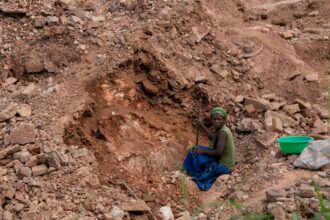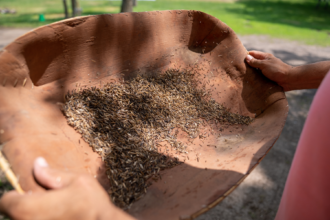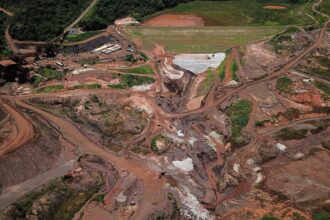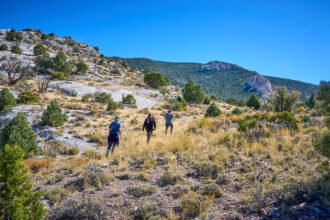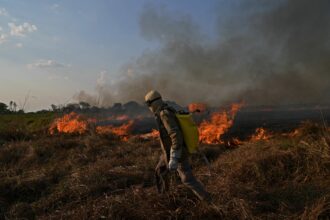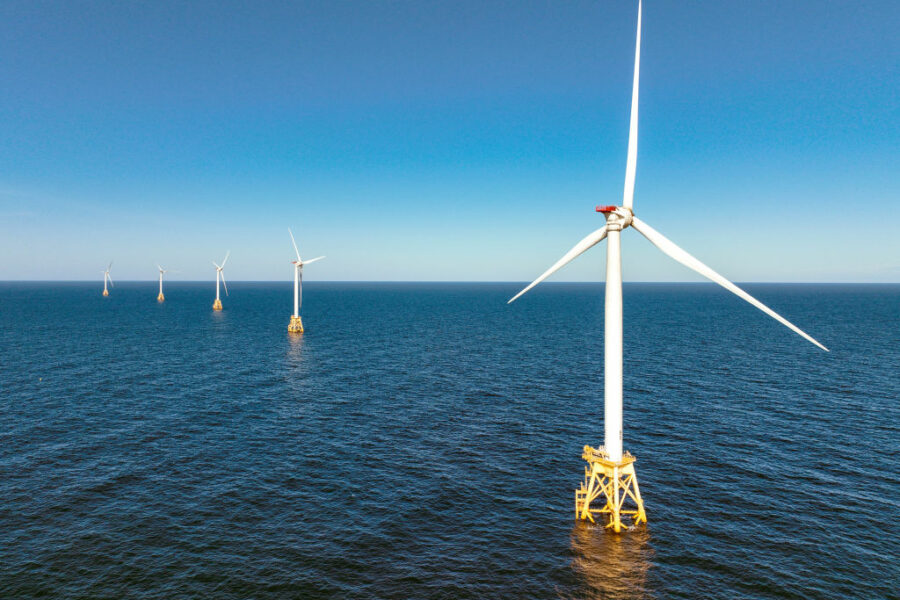More than 250 years ago, the Ojibwe people, one of the largest Indigenous populations in North America, received a prophecy to migrate westward until they reached the land where food grows on water.
When the Mille Lacs Band of Ojibwe encountered wild rice in north-central Minnesota, they knew they found their new home. Rice harvesting has been a cornerstone of Ojibwe culture ever since.
Today, mining exploration company Talon Metals, also has its sights set on Minnesota. Some of the world’s richest high-grade nickel and copper deposits are thousands of feet below the state colloquially known as “the land of 10,000 lakes.”
Talon seeks to construct a mine in the rural town of Tamarack, which it says will be integral to building the nation’s domestic supply of materials necessary for a clean energy transition.
Nickel and copper are key components of rechargeable lithium ion batteries that are widely used for low-emission technologies like electric vehicles (EVs). The company already has an agreement to supply Tesla with nickel from its proposed mine, potentially bringing hundreds of unionized mining jobs to this rural area.

The federal government has also recognized nickel and copper as “essential to national defense,” adding them to the U.S. critical minerals list in 2022 and 2023, respectively. And, this September, the Department of Defense awarded Talon a $20.1 million matching grant to continue searching for deposits throughout the Lake Superior region.
However, sulfide mining, the type that would happen at Tamarack, has a poor environmental track record. The Mille Lacs Band and local environmentalists warn that it could contaminate nearby lakes, streams and wetlands, threatening the vitality of wild rice and local water supply down the Mississippi River.
As the U.S. strives to be a leader in clean energy transition, the Tamarack Project encapsulates both the promise and challenges that lie ahead.
The Dangers of Sulfide Mining
Kelly Applegate, the commissioner of natural resources for the Mille Lacs Band, was shocked when he first saw deep earth imaging of nickel-copper deposits beneath his tribal land in the late 1990s. A study from the U.S. Geological Survey suggested that the Lake Superior region could have deposits as lucrative as high-yield mines in Canada and Russia.
“Oh my gosh, look at these mineral deposits that may one day be sought out,” he recalls thinking to himself.
Two decades later, Talon Metals, a mining company founded by former Canadian venture capitalists and based in the British Virgin Islands (BVI), applied for a permit with the Minnesota Department of Natural Resources (DNR) to create the Tamarack Project just over a mile away from the closest Mille Lacs Band community.
The proposed mine, which Talon is exploring in a joint venture with multinational British-Australian mining company Rio Tinto, would be located near streams and wetlands where sacred wild rice—traditionally called manoomin—thrives. It has been a dietary staple, traditional medicine and spiritual offering for the Ojibwe for centuries.
“It’s a tie to spirituality and culture. It’s our identity: the season of ricing. If that were to be impacted, it could be one of the greatest cultural erasers of mankind in North America. And that’s not something we will allow to happen,” said Applegate.
Unlike iron, which has traditionally been mined in Minnesota, nickel and copper are bonded to sulfide ores. When exposed to air and water, a chemical reaction occurs that releases sulfuric acid and toxic metals like lead, mercury and arsenic that can contaminate water bodies via groundwater and runoff.
Lakes, streams, and wetlands with high concentrations of these byproducts, known as acid mine drainage, are extremely unlikely to host wild rice, according to a 2017 University of Minnesota study.
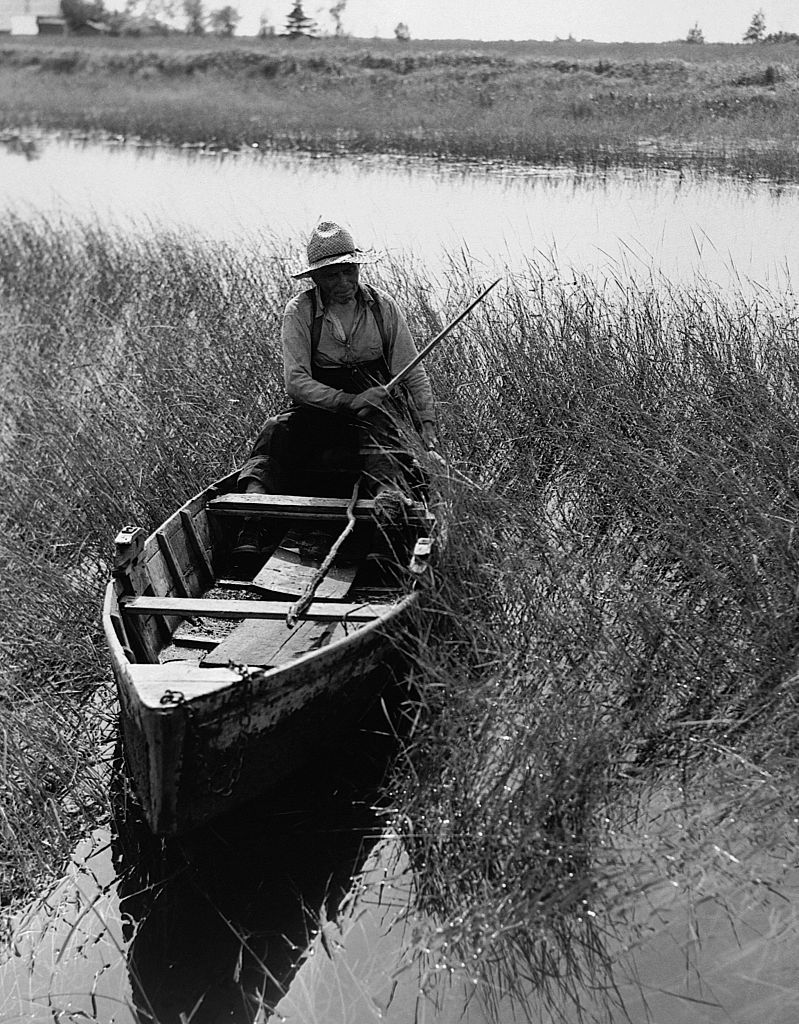
Since Tamarack is at the headwaters of the Kettle River and Mississippi River watershed, the acid mine drainage has the potential to contaminate local water supplies and ecosystems, including some of the region’s most fertile manoomin beds.
“The area where this mine is sited could not be worse. The area is so wet,” warned Applegate.
To date, no sulfide mine has been able to operate without causing pollution to the surrounding environment, according to Kathryn Hoffman, an environmental lawyer and the CEO of the Minnesota Center for Environmental Advocacy.
Mining companies often point to Flambeau Mine, a copper-sulfide mine that operated in Wisconsin from 1993 to 1997, as a success story. But, water samples collected on site by the Wisconsin Department of Natural Resources since operations ceased show copper and zinc levels that exceed state toxicity standards. In 2012, a court found that the mine violated the Clean Water Act—a ruling that was later overturned due to a permitting technicality.
Aware of the negative perception many have of sulfide mining, Talon has committed to using new techniques to limit environmental disturbances, according to the company’s chief external affairs officer and head of climate strategy, Todd Malan.
The planned surface disturbance of the mine has been reduced to approximately 60 acres, the majority of which are drier uplands. For comparison, Flambeau, which was considered a small mine, disturbed 181 acres.
Talon says it will achieve this by surgically removing orebodies found two- to three-thousand feet underground using a tunnel boring machine. The machine will lay a self-sealing cement tunnel as it penetrates through the most water-rich layers of earth found 150 feet below the surface to minimize interaction with groundwater.
Talon has also agreed to build its processing and waste management facility at a dry industrial site in North Dakota instead of the fertile land near the mine. The nickel and copper ore will be transported there via sealed containers from a rail spur at the base of the Tamarack mine.
“This is costing us money. It’s not the normal way that mines get developed. But we’re trying to listen to our community and to the concerns of the tribes and take some risk off the table in Minnesota,” said Malan.

The Tamarack Project is currently undergoing a preliminary environmental review by the Minnesota Department of Natural Resources, which the Minnesota Center for Environmental Advocacy and Mille Lacs Band are watching closely. Bold commitments are often part of a mining company’s playbook to gain early supporters, according to both.
“What Talon is doing at this point is very common for mining companies, which is they are making a lot of promises. Early on, they have ideas for what their project might look like, and some of those are pretty lofty. The typical path of a mining company is that they drop those quietly as time goes on,” said Hoffman.
This is what happened with PolyMet, another mining company that proposed a nickel-copper mine in northeastern Minnesota. In an attempt to gain local support, it pledged to build a finishing plant at the mouth of the mine instead of shipping orebodies overseas for processing. This would have created local jobs and strengthened domestic supply chains. But, those plans were silently abandoned by the time PolyMet was awarded an operating permit in 2018.
PolyMet was positioned to be the first sulfide mine in Minnesota, but its permit was revoked earlier this year before any operations began. The federal government determined that the company’s plans did not comply with the water quality standards of a sovereign tribe downstream.
Transforming Tamarack?
Now, Talon is poised to become the first sulfide mine in Minnesota and has already laid deep roots in north-central Minnesota.
About 80 percent of its employees live in the state, and it is one of the largest employers in Tamarack. Talon says the proposed mine will directly create 300 to 500 new jobs in the town, which currently has a population of fewer than 100 residents.
This comes as opportunities for miners across the state and country are increasingly scarce.
Minnesota has a long, cherished history of mining. The state carried the U.S. through World War II, supplying over 70 percent of the iron ore used in the war effort, and it continues to be the nation’s largest iron producer. But, the supply is dwindling.
As iron mines are depleted and the clean energy transition closes coal mines in Appalachia, United Steelworkers is optimistic that mines like Tamarack can provide much-needed jobs to career miners.
Keep Environmental Journalism Alive
ICN provides award-winning climate coverage free of charge and advertising. We rely on donations from readers like you to keep going.
Donate NowThe union has entered partnership with Talon to provide workforce development, and eventually unionized jobs.
“The last mine that opened in northern Minnesota was in the late ‘70s. And, with the direction that this country is headed towards a greener future, Talon is going to create jobs…. People who lost their mine or lost their job, come on up to northern Minnesota,” said John Arbogast, a United Steelworkers Minnesota staff representative and former iron miner.
Arbogast predicts that the Tarmack Mine will trigger a widespread economic boost for Aitkin County, which is one of Minnesota’s poorest. The influx of new miners will spark demand for new homes and local businesses and encourage locals to stay.
“A kid that graduated from McGregor High School, now could probably walk into a very lucrative middle wage income here. They don’t have to move to the Twin Cities or something like that,” he said.
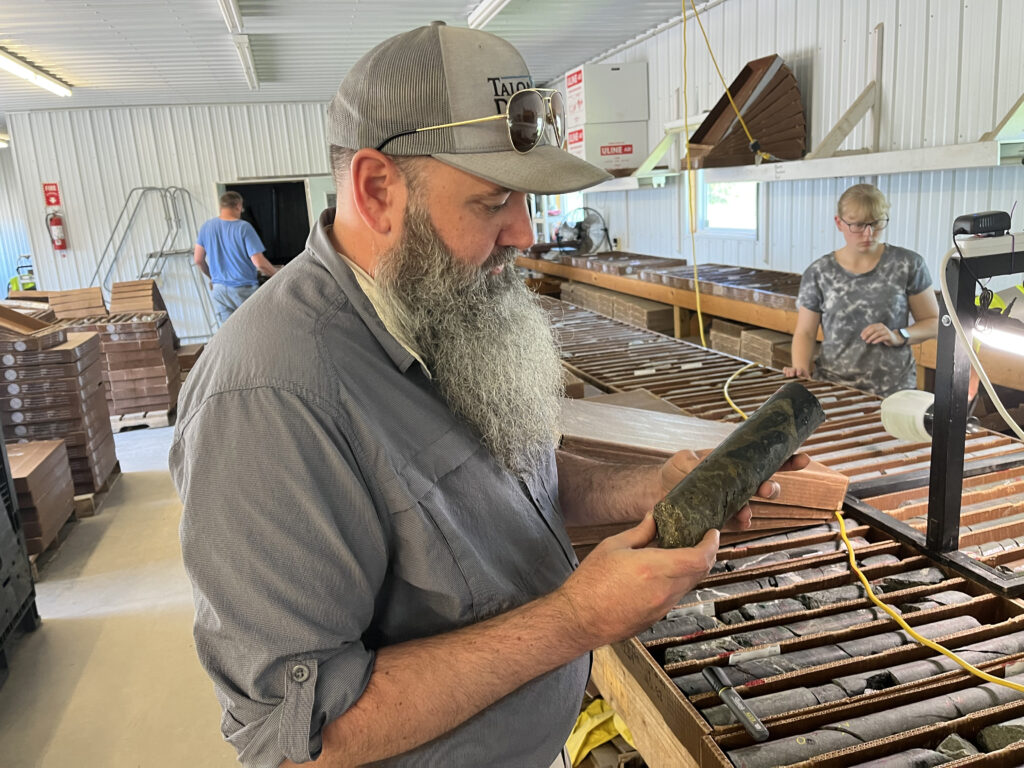
Scarlett Korpela, 19, has done exactly that. She grew up in the nearby town of Cromwell and began working for Talon Metals right after high school as a field technician after hearing about the company from a family friend.
“This position has opened up so many opportunities for me…Talon will give the community plenty of opportunities to grow together and bring more people here,” she said.
Korpela already works with a handful of her former classmates, and Talon continues to attend job fairs at local high schools.
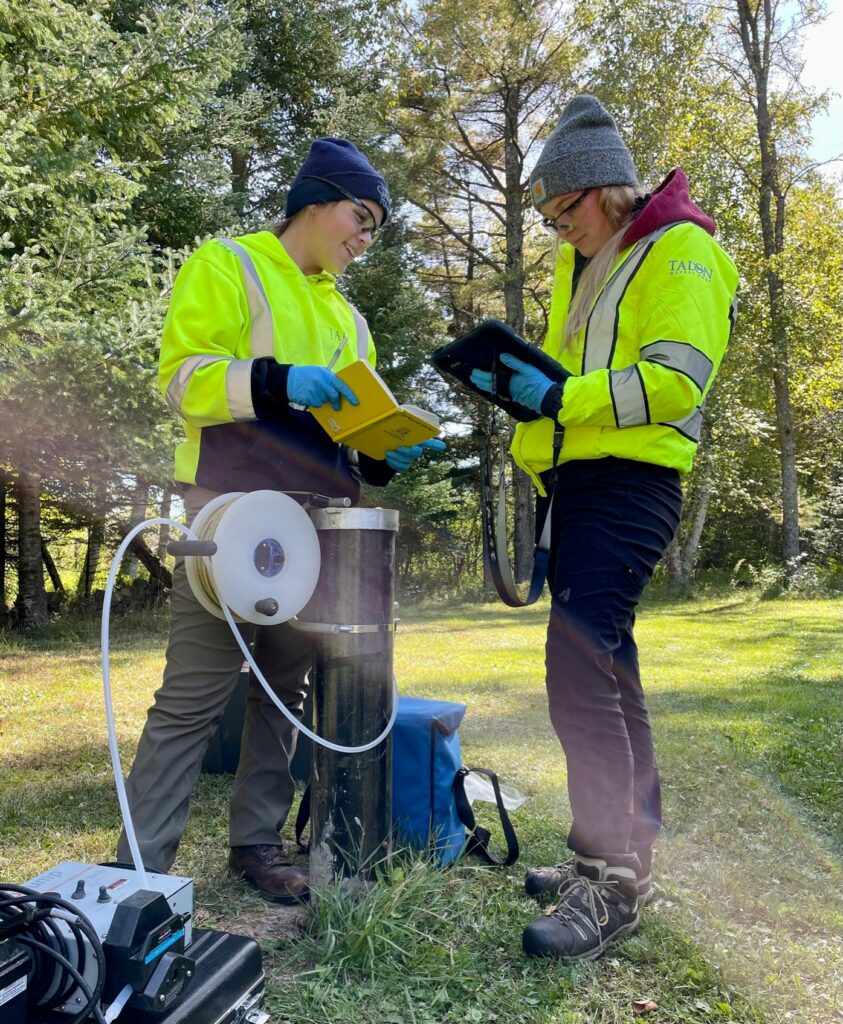
However, some residents like Tom Anderson, who lives just three and a half miles from the proposed mine site on land that his great-grandfather homesteaded in 1896, fear that Talon’s economic promises for Tamarack are a farce.
Anderson, 70, watches with concern as his neighbors buy stock in Talon, which is publicly traded on the Toronto Stock Exchange and the U.S. over-the-counter market, giddy about potential new jobs.
Talon has boldly stated that Tamarack will be at the cusp of a prosperous clean energy economy without being forthcoming about how the mine could pollute the local water supply, according to Anderson. Any influx of mining jobs is also years away since the project must still undergo a lengthy approval process before extracting any ores.
“You don’t want to see local people getting taken advantage of like this,” said Anderson, who created the Tamarack Water Alliance with his wife and other concerned residents to educate his community about the harms of sulfide mining.
Strengthening the Domestic Supply Chain
Talon and its investors are taking their cue from the federal government, which allotted $7.9 billion in the 2021 Bipartisan Infrastructure Law to strengthen the domestic supply chain of critical minerals and battery manufacturing.
The company was one of the first recipients of this money, receiving a $114.85 million grant for the construction and execution of the processing facility in North Dakota.
The U.S. is currently the world’s third-largest importer of raw nickel, primarily getting its supplies from Canada, Norway and South Africa.
Indonesia, however, is the world’s largest nickel producer, accounting for over half of the world’s production in 2021, according to the U.S. Geological Survey. China has invested heavily in the Indonesian supply chain, putting U.S. policymakers on high alert as the rival nations race to have an edge on clean energy technology.
Last month, Minnesota Senators Tina Smith and Amy Klobuchar co-signed a letter opposing a potential trade agreement between the U.S. and Indonesia for critical minerals.
In addition to substantial Chinese influence, they cite concern with Indonesian mines’ weak labor protections and lack of environmental regulations. Recent reports suggest that at least 76,301 hectares of tropical forest—an area almost the size of New York City—have been cleared for nickel mining. About 30 percent of this deforestation has occurred since 2019, as the EV market has proliferated.
Indonesia is on track to deplete its high-grade iron ore within the next six years, forcing it to increasingly turn to low-grade ore. Producing EV-grade nickel from these low-grade ores, however, is a more laborious process that releases two to six times more carbon dioxide emissions than high-grade nickel, like that found in Minnesota.
“For those people that are advocates for the energy transition, who are just kind of catching up to the fact that clean energy systems require a lot of minerals…the fact that we can (mine) at high standards in the U.S. or Australia or Canada, is one thing to keep in mind,” said Malan.
Expanding to Michigan
Even before Talon has broken ground in Minnesota, it already has its sights set on expansion.
The company plans to use the $20.1 million matching grant from the Defense Department to scout Michigan’s Upper Peninsula, and already has an application pending with the state’s National Resources Department for a lease on 23,000 acres near Keweenaw Bay and Lake Superior.
The Upper Peninsula currently has the country’s only operating nickel-sulfide mine, Eagle Mine. It began production in 2014 and is scheduled to close in 2026, creating an opportune window for Talon to enter the market.
Eagle Mine was met with resistance from the Keweenaw Bay Indian Community, a local Ojibwe band that also harvests water-dependent wild rice. The band sued to block construction of the mine, but a Michigan federal appeals court ultimately ruled in favor of the mine.

Today, Eagle Mine conducts its own groundwater and surface water monitoring, which is verified by the Superior Watershed Partnership in conjunction with the Keweenaw Bay Indian Community. Available reporting shows that downstream water has exceeded EPA drinking water guidelines. The full extent of mining contamination, however, is often not apparent until years after a mine closes. Groundwater moves slower than surface water, so toxins in groundwater often remain undetected for long periods of time.
At a public hearing on the application in early October, Michiganians raised the same concerns about water pollution being voiced in Minnesota.
Nickel’s Role in Clean Energy
As Talon awaits approval to mine in Minnesota and explore in Michigan, battery technology is evolving rapidly.
The EV industry is moving away from nickel-dependent lithium-ion batteries toward lithium iron phosphate batteries, or LFPs. These batteries have no nickel and instead use iron and phosphates, which are less expensive and more abundant. LFPs also have a lower energy density, longer lifecycle and less risk of overheating, making them extremely desirable.
The trailblazing EV company Tesla reported that nearly half of their vehicles produced in the first quarter of 2022 were equipped with LFPs.
Talon’s purchase agreement with Tesla could be void if Talon does not begin mining in Tamarack by 2026, which Malon says is a “very aspirational” and “very ambitious” timeline. However, he insists that LFP batteries are not a threat to Talon.
“It’s really horses for courses. We need both battery chemistries to do what President Biden wants to do, which is to have half the U.S. fleet be EVs by 2035. We need LFP batteries for city cars that only go short distances and are not high performance. And we need nickel-based batteries that have longer range or high performance needs,” he said.
Projections still forecast that nickel demand will increase in the coming years, but Talon’s stock has dropped more than 50 percent in 2023.
Given rapid and often unpredictable advancements in battery technology, Hoffman cautions that the nation should proceed judiciously.
“What are the investments we want to make now in order to both prepare for the possibility of higher demand but also not make destructive choices for a hypothetical scenario?” she said.
Hoffman proposes prioritizing reclaiming and recycling nickel currently in circulation to meet the gap between supply and demand. Nickel is infinitely recyclable and the process produces 90 percent fewer greenhouse gasses than mining; however, there are currently few structures in place to optimize recycling.
“Mining companies know how to make money and they know how to build a mine and extract the resources in such a way that they make a profit. We have not done a good job putting the resources into ensuring that the recycling and reuse strategies are just as profitable,” said Hoffman.
Policy options include offering tax incentives for recycling or mandating producers to have recycling infrastructure in place before conducting business.
“Mining should be a last resort. It should be well regulated, and it should be rare,” she said.
The cost of innovations in so-called “green technology” is laid bare in Tamarack, where securing a resource deemed critical for the clean energy transition brings promise of new jobs but also threatens local water quality and indigenous culture.
Applegate, the Mille Lacs natural resource commissioner, also champions recycling and views the Tamarack Project as another event in a long history of resource plundering from Native Americans.
“They took our timber. Our lands were taken from us. Our waterways were manipulated. All of the decisions on infrastructure, it all impacted the band,” he said. “And now here we are again, and really what we’re being asked to do is trade one form of pollution to solve another.”
Karina Atkins is a Chicago-based environmental journalist interested in the sociocultural dimensions of environmental issues. She regularly reports for the Chicago Tribune on the impacts of climate change and environmental policies on the Midwest.





